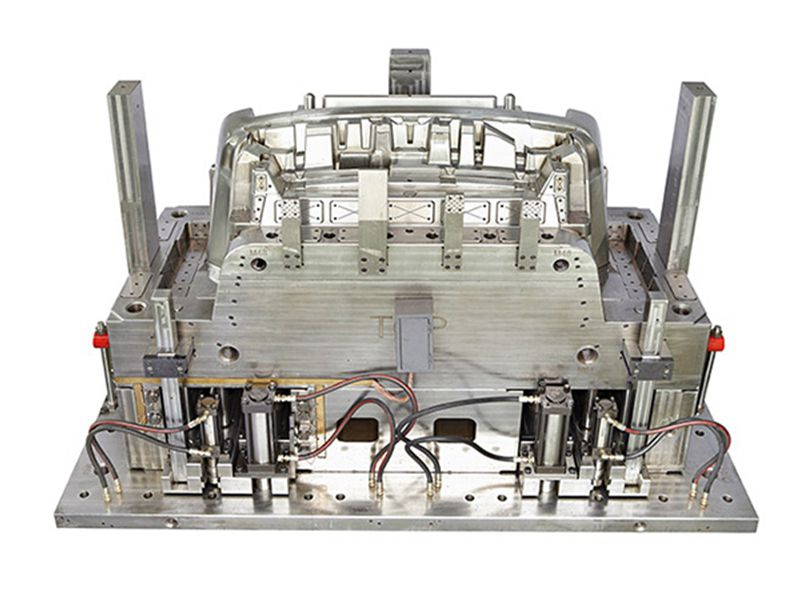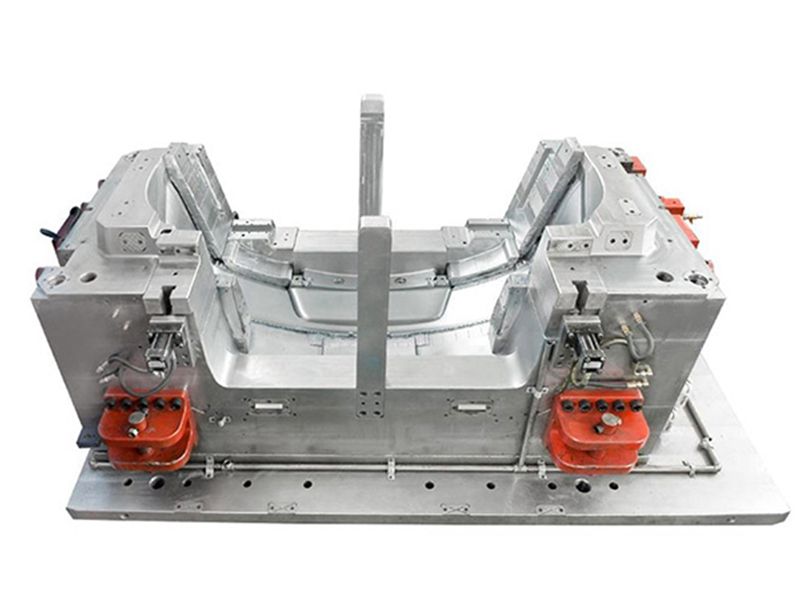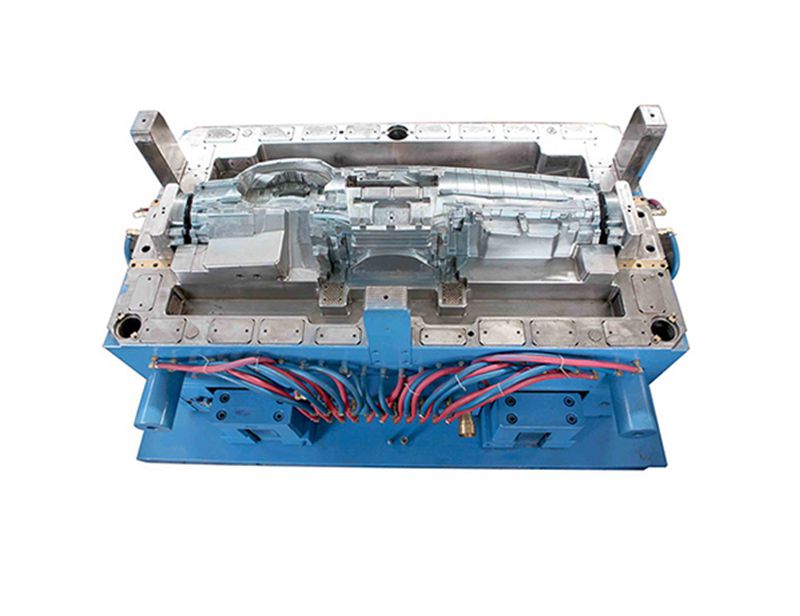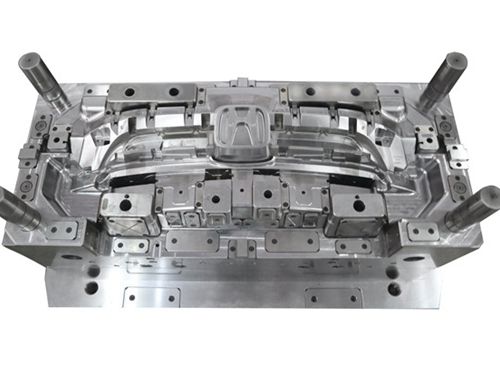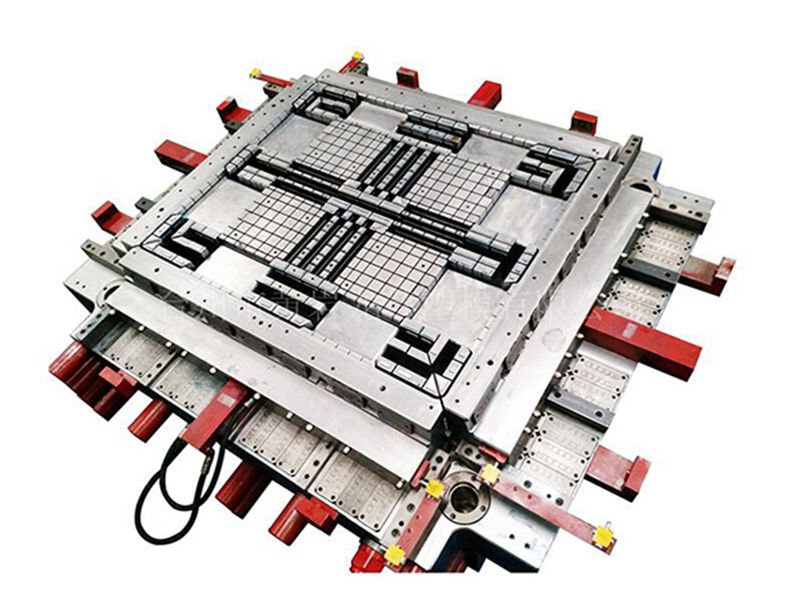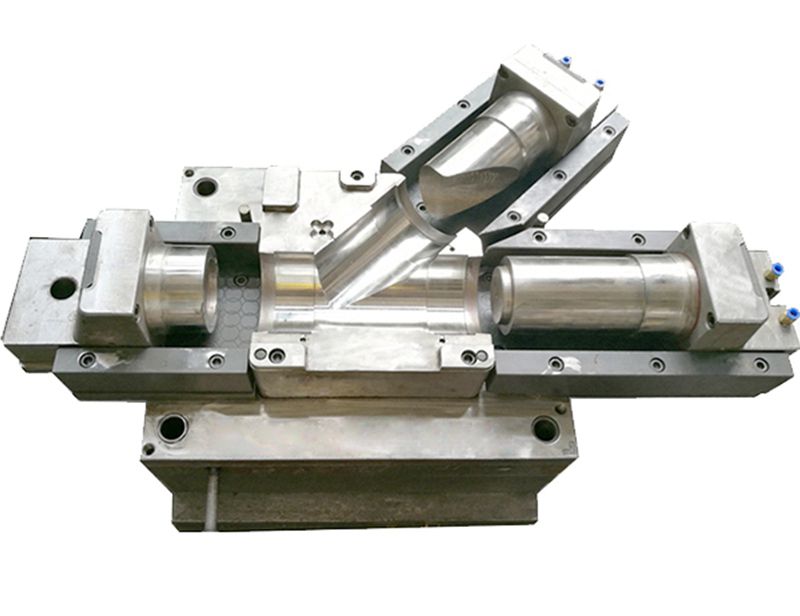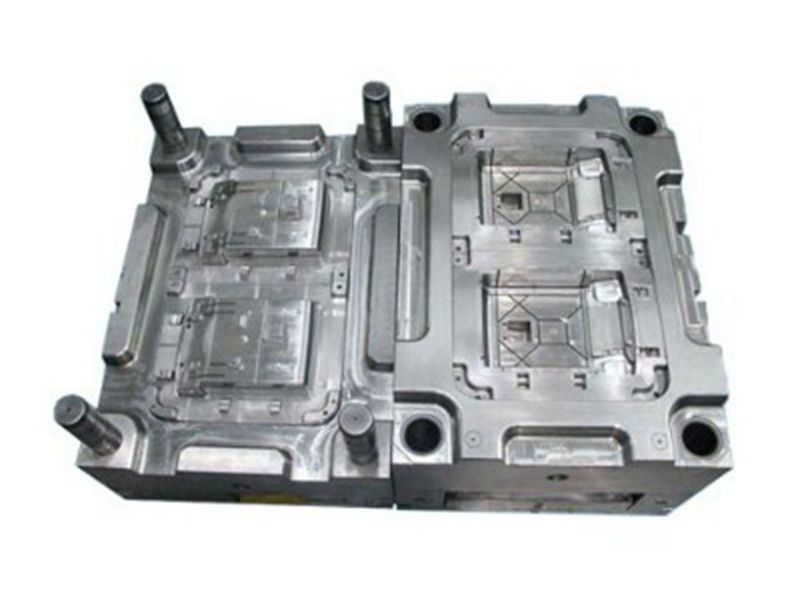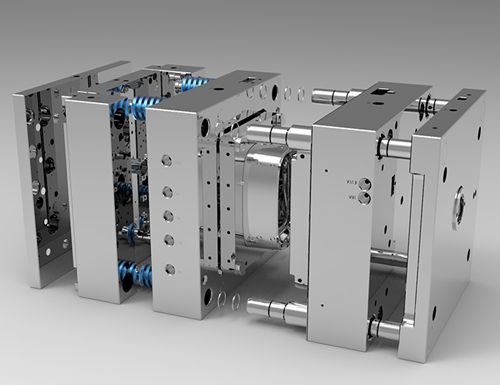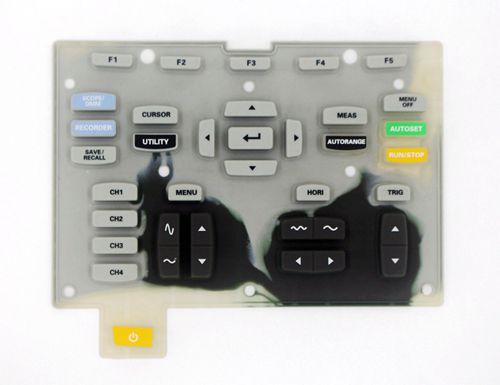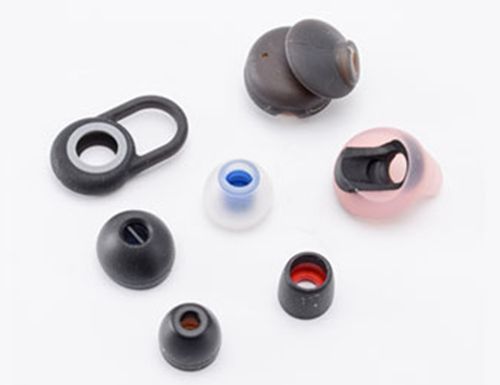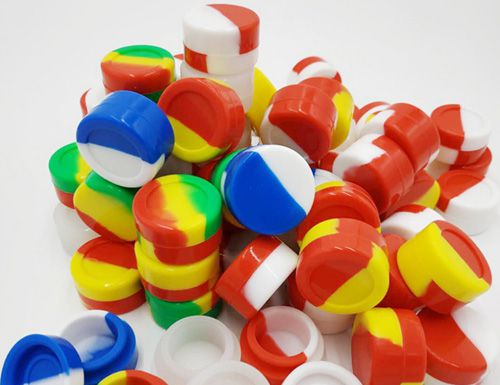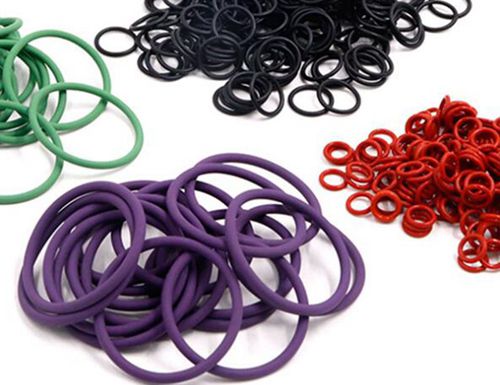Polyisoprene (IR) is the synthetic version of natural rubber and is generally used in similar types of applications. It exhibits similar properties but is generally not used interchangeably because of minor differences which lead to certain advantages or disadvantages compared to natural rubber. Polyisoprene is lighter in color, more uniform, and of higher purity than natural rubber. On the other hand, polyisoprene is lower in green (unvulcanized) strength and is generally slightly poorer in tensile strength, tear strength, and fatigue resistance. Unlike natural rubber which is practically all cis-1.4 structure (greater than 99%), polyisoprene is about 98% cis-1.4 and 2% 3.4 structure, which interrupts the linearity of the chains. Although the 3.4 structure is only a small amount, it is significant enough to reduce the strain crystallization and hence the strength of an unfilled vulcanize. Natural rubber contains foreign matter originating from the latex, e.g. proteins, protein decomposition products, and amines that accelerate the vulcanization. As they are absent from synthetic polyisoprene, the vulcanization of the latter takes place more slowly.
Polybutadiene (BR) can be made in several significantly different grades (by two different processes, either solution or emulsion … polymerization). Its chemical structures are all similar enough to NR to give it the same poor oil and solvent resistance, plus susceptibility to weathering and ozone attack. Polybutadiene exhibits excellent fatigue resistance and abrasion resistance when compounded with reinforcing blacks but it has poor strength relative to natural rubber. Polybutadiene possesses the best low-temperature performance of any of the hydrocarbon-based elastomers, surpassed only by silicone elastomers. While lacking in high temperature resistance, it exhibits low levels of stiffening to -55°C and remains flexible to below -70°C. Used alone, polybutadiene is very difficult to process and generally has higher than normal damping due to the reinforcing grades of carbon black needed to give it strength and to the oil which is used to make it processable. It is generally blended with other polymers and in blends with natural rubber or SBR, it imparts improved low temperature resistance, fatigue resistance, abrasion resistance, and resilience. In addition, the reversion resistance on overcure and the aging resistance of NR vulcanizates are improved when they contain BR as a blend component. Over 90% of the polybutadiene produced is consumed by the tire industry, but it also finds use in shoe soles, conveyer belts, roll covers, and shock absorber pads.
Styrene Butadiene Rubber (SBR) is a copolymer of styrene and butadiene that was commercialized during World War II as a substitute for natural rubber. These two monomers combine in an irregular pattern that provides little inherent strength, but by use of appropriate particulate reinforcement, the polymer can be made into many usable general purpose compounds. Like natural rubber and polybutadiene, SBR has little resistance to heat, oxygen, ozone, gasoline, oil, and aromatic hydrocarbons. It has few special physical properties, only moderately low temperature tolerance, and can be made from 40-90 durometer. The low temperature properties depend on the styrene content, but at the most common level of 23.5%, SBR is useful from -50c to +100C. The styrene content causes the rubber to stiffen at low temperatures, so polymers with higher styrene content will have poorer low temperature properties. Since it is one of the lowest cost elastomers available and is used in tires, it is produced in the highest volume of all the synthetics. Many grades are available, including some with black and/or oil predispersed in the polymer to improve properties or processing. For applications that cycle through zero strain, SBR can perform as well or better than natural rubber in fatigue. Much of the SBR produced goes into the tire industry in blend with polybutadiene and/or with natural rubber. It also finds use in shoe soling, cable insulation, roll coverings, and general purpose molded rubber goods.
Butyl Rubber (IIR) is…a copolymer of isobutylene with a small amount of isoprene to provide cure sites. It is also available in chemically modified forms, containing small amounts of chlorine or bromine to significantly improve some aspects of processing and final properties (called chlorobutyl and bromobutyl rubber, CIIR and BIIR respectively). The addition of chlorine or bromine improves the vulcanization rate, the state of cure, and the reversion resistance. Butyl is known for its very low gas permeability and high damping. Because of the high damping at room temperature, butyl is widely used in dynamic applications where wide frequency ranges are encountered and where resonance must be controlled. However, the high damping which makes it ideal for dampers is not retained at elevated temperature. Butyl has excellent aging and weathering resistance, good low temperature flexibility, and covers the 30-80 durometer range. Butyl generally finds use between -45°C and +125°C. The cost is higher than NR, and processing has some special requirements. It is resistant to phosphate ester hydraulic fluids, ketones, and ozone but is degraded by petroleum oils and fuels. Butyl finds use in inner tubes and innerliners for tires, body mounts for trucks and cars, curing bladders, seals, and pharmaceutical stoppers. A newer variation of butyl rubber was commercialized under the tradename Exxpro™. Exxpro™ is a copolymer of polyisobutylene and brominated paramethylstyrene (abbreviated PMS and used between 2 and 10% to supply cure sites). Its properties are very similar to butyl except that it is more heat stable due to the lack of unsaturation in the polymer backbone.
Ethylene-Propylene Rubber (EPM and EPDM) is a copolymer of ethylene and propylene (EPM) or a terpolymer of ethylene and propylene with a third diene monomer added as cure sites (EPDM). EPDM has no double bonds within the main chain and all the unsaturation is pendent (meaning in sidechains attached to the backbone). Sulfur vulcanization is possible because of the pendant unsaturation in the diene and in fact, that is the main reason for inclusion of that particular monomer. Several different diene monomers are commercially available, but ethylidenenorbornene is the most common. Copolymers of ethylene and propylene (EPM) must be vulcanized using peroxides since with no unsaturation and sulfur cures are ineffective. The absence of double bonds along the main chain imparts significantly improved heat and ozone resistance to this polymer as compared to natural rubber and most of the other general-purpose elastomers. EPDM is useful to between 150°C and 175°C, but it is distinctly inferior in heat resistance to silicone and fluorocarbon elastomers. It has better_ tensile strength, bond strength, and fatigue resistance than silicone but is inferior to natural rubber in all three aspects. Like natural rubber, EPDM is strongly affected by petroleum oils and fuels, but is resistant to acids, alkalis, steam, ketones, alcohols, and phosphate ester hydraulic fluids. EPDM does not possess the high elasticity of natural rubber and generally exhibits a moderate level of damping. Another major weakness is the lack of resistance to stiffening at low temperatures. EPDM is non-brittle down to -55°C but it is extremely stiff at -40°C and below. EPDM can be formulated from 30 to 90 durometer, has reasonably good low temperature properties, and is sometimes used as a blending polymer with other elastomers to improve aging and ozone resistance. EPDM has excellent electrical insulating and dielectric properties. Because of its electrical properties and its excellent resistance to hot water, steam, brake fluids and weathering, it finds use in automotive moldings and weather-stripping, radiator hoses, cable insulation, and brake seals.
Polychloroprene Rubber (CR), commonly known as neoprene, has a structure identical to that of natural rubber except that a methyl sidegroup has been replaced by a chlorine atom giving it more polarity. Like NR, polychloroprene is strain crystallizing giving it inherent strength and fatigue resistance. The chlorine atom serves to impart an increased level of oil resistance and resistance to oxidative degradation and ozone attack. Polychloroprene is attacked by gasoline and aromatic hydrocarbons, but to a lesser extent than natural rubber. Unfortunately, polychloroprene, like natural rubber, has a tendency towards reversible hardening due to crystallization when exposed to low temperatures. While it has better oil and heat resistance than NR, the poor resistance to stiffening at low temperatures limits its use in some applications. Its service temperature range is -40°C to + 125°C. A distinction is generally made between grades of polychloroprene that are sulfur modified and grades that are mercaptan modified. The sulfur-modified types exhibit better fatigue resistance and develop highly resilient compounds with high tear strength. The mercaptan-modified grades have better raw polymer stability and the vulcanizates have betterheat and compression set resistance. Polychloroprene is more expensive than NR and has a higher specific gravity. Polychloroprene compounds are prone to scorch (premature crosslinking) during storage, meaning that they have limited storage stability, both as a raw polymer and as mixed compounds. Many different grades of chloroprenes are made for various purposes. Like NR, it can be used in latex form in many adhesives. Polychloroprene finds use in extrusions, seals, hoses, belts, rubberized fabrics, shoe soling, and vibration isolators.
Chlorosulfonated Polyethylene (CSM) is sold under the trade name Hypalon™. CSM – has a slightly restricted hardness range, 50-95 durometer, and is known for its resistance to weathering, ozone, aqueous solutions, etc. Colored compounds are commonly made, and retain their colors well even after long term exposure to sunlight. CSM is also flame retardant, tolerant of moderately high temperatures, has moderate oil resistance and good cold flex properties. However, many of its other physical properties are undistinguished and it resembles polychloroprene in many respects, other than being less resilient. Some oils, solvents, hydraulic fluids attack it, and it is not used in many dynamic applications. It finds use in the wire and cable industry and in the hose industry. Another version of this polymer is an alkylated form sold under the trade name ACSIUM™. It was developed especially for dynamic applications. Its lower damping makes it more comparable to polychloroprene in resilience, and it has better heat aging and low temperature performance.
Chlorinated Polyethylene (CM) is an elastomer produced by chemical modification of what is normally a thermoplastic. This material has come into substantial use in the last decade, primarily for wire, cable, and hose, where it is very cost effective. Like CSM, it has very good color stability. Its fluid resistance is poor and it stiffens at -35°C, but it withstands heat better than NR. It has good dynamic fatigue resistance, excellent aging, weathering and ozone resistance, moderate oil resistance, and is somewhat similar in properties to neoprene (CR). It finds use in the wire and cable industry because of its f lame and weathering resistance and its good color stability.
Acrylonitrile-Butadiene Rubber (NBR) is a copolymer of butadiene combined with acrylonitrile (which gives high polarity). Generally called nitrile, this copolymer is made in grades containing between 15% and 50% acrylonitrile. The acrylonitrile content imparts oil resistance to the elastomer, and the more acrylonitrile used in the copolymer, the higher the oil and fuel resistance. However, low temperature flexibility is impaired by increasing acrylonitrile concentration as can be seen in the following graph.4 Ozone resistance is not high, but may be improved by blending with some polyvinyl chloride (PVC, a thermoplastic). Nitrile has somewhat better heat resistance than natural rubber, but is generally used below 125°C. It is significantly affected by ozone, ketones, and phosphate ester hydraulic fluids, and nitrile has only modest fatigue resistance at best. Low temperature resistance may be as low as -55C and as high as -10C, depending on the ACN content. NBR is the least expensive elastomer with really good oil and fuel resistance so it is used widely in static seals, oil seals, O-rings, hoses, bellows, diaphragms, work boots, shoe soling, tank liners, and conveyer belts. There is also a commercially available terpolymer of acrylonitrile, butadiene and isoprene made by Zeon Chemical. It is intended to have better dynamic properties and processing than conventional nitrile rubber. While it sees limited use, it can be found in some roll coverings, diaphragms, and oil resistant rubber thread.
Carboxylated nitrile rubber (XNBR) is a variation of NBR in which an acidic monomer such as acrylic acid has been combined with the butadiene and acrylonitrile. This material has higher modulus, tensile strength, tear strength, and abrasion resistance than NBR, but it has poorer compression set resistance and is generally available in a limited range of acrylonitrile contents.
Hydrogenated Nitrile Rubber (HNBR) is based on NBR that has been chemically altered (hydrogenated), resulting in a much lower amount of unsaturation in the polymer backbone. Hydrogenated nitrile exhibits significantly improved heat resistance (up to 150°C) while retaining the oil and fuel resistance that are characteristic of nitrile elastomers. Small amounts of residual unsaturation allow HNBR to be sulfur cured but it is often peroxide cured for the best resistance to heat and oxygen. It has excellent tensile strength and abrasion resistance combined with moderate low temperature performance. HNBR exhibits a degree of strain crystallization that contributes to its high flex life. The excellent dynamic properties and high temperature resistance make it well suited to applications such as automotive serpentine belts. Cost is markedly higher than nitrile. Its good properties have led to penetration of markets such as synchronous timing belts, power steering systems, and numerous other demanding automotive and industrial applications. A carboxylated version of HNBR has also been commercialized.
Epichlorohydrin comes in three types, the unmodified polyepichlorohydrin (CO), a copolymer with ethylene oxide (ECO), and a terpolymer with ethylene oxide and allyl glycidal ether (GECO or ETER). The CO type has low gas permeability, even lower than butyl rubber, good resistance to heat, weathering, and many fuels, and excellent flame and ozone resistance. However, it stiffens quickly at moderately low temperatures, and is attacked by some solvents and hydraulic fluids. The copolymer is more tolerant of cold, performing through a temperature range from 50°C to + 135°C, but it has slightly higher permeability (similar to butyl). The terpolymer’s properties are similar to those of the copolymer, except that it can be sulfur or peroxide cured, due to the unsaturation in the allyl glycidal ether side groups. One special characteristic of these polymers is their inherent low volume resistivity, which can be useful where buildup of static charges is a problem. Because of the combination of oil resistance and high temperature resistance, it is sometimes used in place of nitrile rubber in applications requiring exposure to one or both of these adverse conditions. It has better low temperature resistance than nitrile at similar levels of oil resistance but is much more difficult to process. Upon aging, epichlorohydrin elastomers soften and lose strength while nitrile elastomers harden and lose elasticity. The cost of polyepichlorohydrins is somewhat higher than that of nitrile. They find use in seals, hoses, diaphragms, roll covers, belts, and vibration dampers.
Polyacrylate rubber (ACM) is formed through copolymerization of acrylic esters with monomers. The acrylic esters are predominantly ethyl acrylate, butyl acrylate, or ethyloxy ethyl acrylate with a small proportion of another monomer that provides sites for crosslinking. The choice of acrylate determines both the brittleness temperature and the oil resistance of the vulcanizate. Polyacrylates have outstanding resistance to the combined effects of heat and oil, and to attack by hot high pressure lubricants. Weathering, ozone, and high temperature are well tolerated by this material. However, it has poor low temperature characteristics, is degraded by water/steam, and swells badly in a number of other fluids. It is moderately expensive, and not used in high volume. Most polyacrylate is used in shaft seals, o-rings and oil hose.
Ethylene-Acrylic Copolymer (AEM) is often referred to by the tradename Vamac™ and is a copolymer of ethylene and methyl acrylate, plus a low percentage of a carboxylic acid monomer which provides the cure sites in the resulting polymer. Compared to most polyacrylate rubbers, low temperature flexibility, elongation at break, and heat resistance are improved while oil resistance is significantly reduced. However, AEM is still classed as an oil resistant polymer. AEM is difficult to process and is generally only used in dynamic applications where high tan delta can be tolerated. Vamac is still gaining in usage levels, and is used in seals and o-rings, hose, and dampers. Recently a new product, named ADVANTA TM, was introduced, which is a blend of ethylene acrylic copolymer with fluorocarbon polymer. This material is intended for use in applications that demand better fluid resistance and high temperature performance than ethylene acrylic rubber, but where all the properties of the more expensive fluorocarbon elastomers aren’t necessarily required.
Ethylene-Vinyl Acetate Copolymer (EVM) is another copolymeric elastomer, with a saturated chain that provides good resistance to heat and ozone, and polar groups that impart oil resistance. To be a rubbery material, the polymer must contain between 30% and 75% vinyl acetate. Otherwise, it acts more like a plastic. EVM has poor low temperature and mechanical properties, but in its major applications of wire and cable sheathing, this is not a real impediment.
Polynorbornene (PNR), known by the trade name Norsorex™, is characterized by high tensile properties, even at very low hardness levels. The glass transition temperature T of PNR is +35°C and it is essentially a low melt plastic in the uncompounded form. Therefore, polynorbornene compounds contain high quantities of oil to reduce the glass transition temperature to as low as -60°C. PNR is used in damping devices, roll covers, and bellows and may be blended with NR to influence the damping characteristics of the NR vulcanizate.
Trans Polyoctenarner (TOR), also known by the trade name of Vestenemer™, and is produced by the ring-opening polymerization of cyclo-octene. About 75% of the chains are linear with little side branching and 25% of the chains are ring-shaped molecules. It is generally used in blends {1 0 to 30 phr) with other elastomers as an elastomeric processing aid that will cure into the elastomer network. It is crosslinkable with both sulfur and peroxide cure system. Below its melt point (between 35 and 50°C), it is a semi-crystalline solid capable of improving the green strength of the unvulcanized compound. Above its melt point, it becomes honey-like in consistency, capable of lowering the viscosity and improving extrusion and mold flow characteristics. Its major use appears to be in compounds for injection molding and calendering.
Polypropylene oxide rubber (GPO) was a development of the 70’s, a copolymer of propylene oxide and allyl glycidyl ether. The resulting material could be compounded similarly to NR, but with some advantages. It has a 40-90 durometer range, good high and excellent low temperature performance, good physical properties, and some oil resistance. Fuels attack it and it is prone to high compression set. It was used in a few dynamic applications such as automotive engine mounts, but volume sales never materialized and it is being discontinued.
Fluorocarbon elastomers (FKM) are highly specialized materials that offer the best resistance of all elastomers to the attack of heat, chemicals, and solvents. They are most commonly based on copolymers of vinylidene fluoride and hexafluoropropylene or terpolymers of the previous two monomers with tetrafluoroethylene. Additionally, lower temperature versions are made by incorporating a fluorinated vinyl ether. Fluoroelastomers have fluorine atoms replacing most of the hydrogen atoms on the carbon polymer backbone. They are highly resistant to petroleum oils and fuels, halogenated hydrocarbons, oxygen, and ozone, but are attacked by ketones, esters, and ethers. Fluorocarbon finds little use in most dynamic applications because of its extremely poor low temperature properties and fatigue resistance. While it is chemically quite resistant to high temperatures (+240°C}, it cannot perform dynamically at elevated temperatures unless the strains are extremely low. Fluorocarbon has poor hot tear strength and poor fatigue resistance at any temperature. G’ and tan delta for fluorocarbon elastomers are extremely frequency and temperature sensitive due to the high glass transition temperature of the polymer. It stiffens significantly when the temperature falls much below room temperature, and below 0°C, it is virtually useless as a mount material. The cost is quite high, and processing can be a little difficult. Some specialty grades with improved low temperature tolerance are available, but at substantially greater cost. Fluorocarbon elastomers find a great deal of use in seals and a rings.
Tetrafluoroethylene co-propylene (FEPM) · is a copolymer of tetrafluoroethylene and propylene, sold under the trade name Atlas™. It is another chemical variation of fluorocarbon rubber and has substantially improved resistance to high-pressure steam, amines, and sour crude. Although its low temperature properties are even worse than conventional fluoroelastomers, it has proven very useful in some specialized applications, such as seals used in the hot, corrosive environment at the bottom of oil wells or geothermal wells.
Perfluoroelastomers (FFKM) are yet another sub-classification of the fluoroelastomer family and is one of the only elastomers whose structure contains no hydrogen atoms at all. These are sold by DuPont (Kalrez™), Daikin, and Ausimont, and they have the ultimate chemical and heat resistance. FFKM compounds have been reported to be capable of service temperatures as high as 300°C. At almost $3000/lb, they are used very seldom, and then only in situations where absolutely nothing else will work.
Thermoplastic Elastomers (TPE) in the ideal case are polymers that combine the service properties of elastomers with the processing properties of thermoplastics. This is obtained through the simultaneous presence of soft elastic segments and hard crystallizable segments. (Figure 2.15) The soft segments have high extensibility and a low glass transition temperature. The hard segments have low extensibility and a high T9 and must be thermodynamically incompatible with the soft segments so that they do not penetrate each other, but remain as individual and distinct phases. The hard segments act both as reinforcement (providing strength) and as crosslinks (providing memory). At elevated temperatures, the hard segments first soften and then melt. When the plastic phase cools, it hardens again in a reversible manner. Thus the TPE processes like a plastic, but has elastic properties similar to a cured rubber. There are many different TPEs available on the market. One common type is based on styrene triblock copolymers where styrene forms the hard phase and butadiene forms the soft rubbery phase. Other TPEs are based on blends of elastomers with thermoplastics such as EPDM or NBR with polypropylene. Since the melting phenomenon is reversible, thermoplastic elastomers are not typically used in applications that could see even brief excursions to higher temperatures. It also makes them susceptible to creep under load.
Polyurethane elastomers (PUR, AU, EU, TPU) are an important class of organic materials for many technological applications. They fill the gap between the rubbery, highly elastic polymers and the tough or hard polymers. Urethanes as a chemical type are by far the largest group of all elastomers. Polyurethanes are available as liquid casting systems, vulcanizable millable-gum rubbers, and thermoplastic urethane rubbers (TPU). Considering just the thermoset elastomer varieties, a range of from 35 durometer on the normal scale (Shore A) to 75 durometer on the higher D scale can be covered. Most of the polyurethane elastomers available commercially are based on low molecular weight polyesters (AU) or polyethers (EU). Polyurethanes generally have extremely high tensile strength and abrasion resistance and a fair degree of oil resistance. They are limited in heat resistance and are sensitive to hydrolysis so they are degraded by water and steam over time. Their cost can be moderate to appreciable, and they are used extensively in many special applications, especially for abrasion resistance.
Silicone (MQ, VMQ, PVMQ) The most basic version of silicone is dimethyl silicone or polydimethylsiloxane or simply MQ. However, most silicone elastomers have a small percent (0.1 to 1.0%) of vinyl incorporated into the polymer to serve as cure sites, hence the “V”. The backbone of all silicone elastomers is completely saturated which gives it excellent heat resistance. Because of the regularity of the polydimethylsiloxane chains, VMQ (vinyl methyl silicone) tends to crystallize rapidly at low temperatures, around -40°C. For very low temperature performance, a small amount of phenyl (3 to 7 mole percent) is incorporated to make PVMQ (phenyl vinyl methyl silicone.
Vinyl methyl silicones (VMQ) and phenyl vinyl methyl silicones (PVMQ) are both very important elastomers in aerospace applications involving the isolation and damping of both vibration and shock. Silicones have the broadest temperature range available in an elastomer and are capable of operating from roughly -100°C to over +240°C. They have outstanding resistance to ozone and heat and possess reasonable fie~ fatigue resistance. In addition to its excellent heat resistance, it is semi-oil resistant and can stand some oil exposure (not submersion) far better than NR or BR. Silicone can be formulated with a wide range of damping varying from tangent deltas of 0.07 to over 1.00 at ±1 0% strain and 10 hertz. Silicone has mediocre strength, typically on the order of 1000 PSI, and has lower bond strength than is generally expected from the organic elastomers. It is significantly more strain sensitive and more prone to creep under load than is natural rubber. The phenyl vinyl methyl siloxane elastomers are superior to the vinyl methyl siloxane elastomers in ultra low temperature applications (below -40°C} since the addition of about 5% phenyl groups eliminates the secondary crystallization and the associated stiffening at low temperatures. PVMQ elastomers also have improved resistance to radiation compared to VMQ. Silicone elastomers make some of the best electrical insulators and they are used widely throughout the electrical electronic, aerospace, automotive, cable and textile industries. Their biochemical inertness also makes them particularly suitable for pharmaceutical applications.
Fluorosilicone (FVMQ) Fluorosilicone is a polymer of 3,3,3 trifluoropropyl-methyl siloxane that contains a small amount of incorporated vinyl groups which function as the cure sites. Because it is the fluorinated relative of VMQ, it has many of the similar strengths and weaknesses of the silicone elastomers. Replacing half the methyl groups with trifluoropropyl groups gives significant increases in the oil and fuel resistance of the elastomer. Fluorosilicone is a high performance specialty polymer that is used in applications involving severe exposure (including submersion) to oil and fuel. While the low temperature performance is not as good as silicone, it is substantially better than that of the oil-resistant hydrocarbon elastomers including both nitrile and the fluorocarbons. It is generally used in the range between -55°C and + 175°C although it becomes quite stiff below -45°C. FVMQ demonstrates superior fatigue resistance compared to the fluorocarbon elastomers but is inferior to both VMQ and PVMQ silicones. The heat resistance is also poorer than that of either VMQ or PVMQ silicone. Strain sensitivity and creep resistance are worse than the silicones and the cost is substantially higher. Fluorosilicone elastomers find use in seals, o-rings, shock mounts, isolators, and diaphragms.
Elastomers with Other Structures:
Polysulfide Rubber (TM) is unlike most conventional elastomers in that it contains sulfur atoms in the polymer backbone along with the carbon atoms. Its trade name, Thiokol™, is better known than its chemical name. All its compounds, which cover 20-80 durometer, have a characteristic unpleasant odor, generally poor physical properties, limited temperature tolerance, and don’t process very much like other elastomers. Its strong points are good weathering/aging, very low permeability to gases, and outstanding resistance to hydrocarbon solvents and fuels. It is moderately costly, and is available in liquid form (useful for making sealants and caulks) as well as the conventional millable form used to make molded elastomer parts.
Poly-(Fiuoroalkoxyphosphazene) Elastomer (FZ) is a type of fluoroelastomer based on fluorophosphonitrilic derivatives. It was introduced to the market in 1978 as PNF, fully commercialized in 1987 as Eypel™ and then discontinued in 1993 and is no longer available. It has a unique chemistry, in that the polymer backbone is made up of alternating phosphorous and nitrogen atoms. These elastomers have a maximum service temperature of 175°C and a glass transition temperature of -65°C. Their temperature range and chemical resistance are similar to fluorosilicone. They process more like the organic elastomers than like the silicones and have better abrasion resistance than the fluorosilicones. FZ elastomers stiffen more than the fluorosilicones at low temperatures and at equivalent levels of damping, the strain sensitivity is similar. They were extremely expensive (-$300/lb) and were replaced in most applications by fluorosilicone.
Royaltherm™ is the Uniroyal trade name for a somewhat unusual product, an EPDM polymer modified with a silicone graft. It was intended to fill a market niche for a less expensive and more easily processable elastomer that had some of the desirable characteristics of the more costly silicone materials. It can be made between 40 and 70 durometer, and can be cured with either sulfur or peroxide. Royaltherm™ has excellent steam and hot water resistance, excellent electrical properties, and flame retardance without halogens. It has better heat resistance than EPDM and better flex life than silicone. While it does have interesting properties, its use is still at a low level and it remains to be seen how it will fit into the industry.
Sifel™ is a new class of fluoroelastomer produced in prototype quantities by Shin-Etsu. It is a combination of a perfluoropolyether backbone with a terminal silicone cross linking group. The backbone begins and ends with silicon atoms and contains a repeating segment of carbon and oxygen atoms. It is supplied as either a liquid or paste and it cures into a resilient elastomer. Its features are low temperature flexibility, high temperature resistance, resistance to solvents, fuels and oils, and excellent electrical insulation properties. It is extremely expensive and will likely find limited use in niche applications.
Reference:
Better bright silicone rubber & plastic mould products limited.





